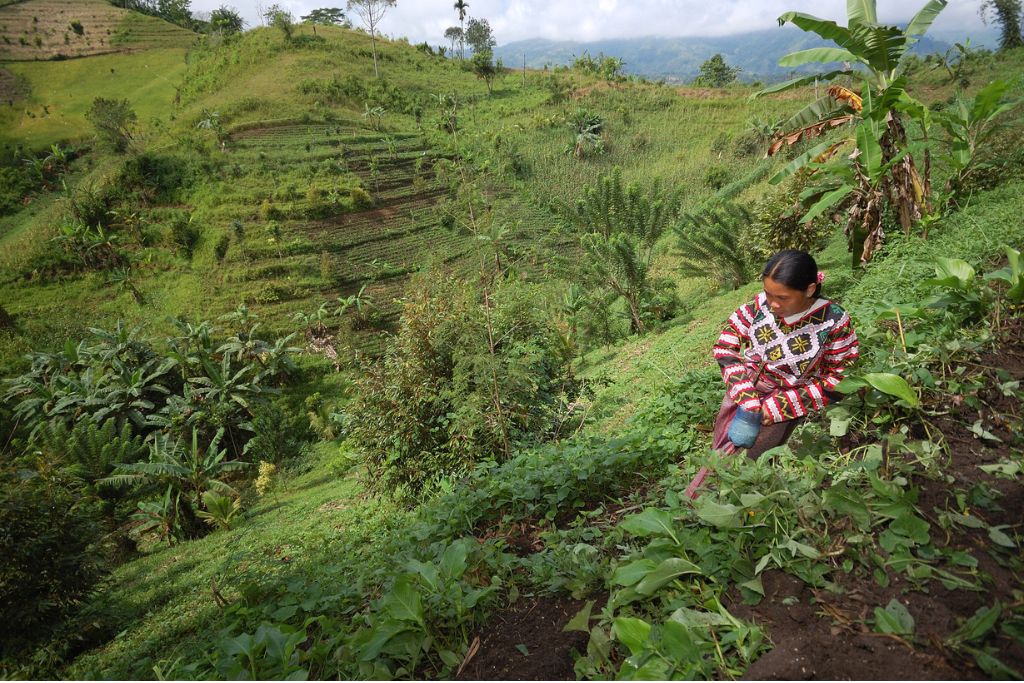The Philippines is well known for its homegrown produce reaped by its indigenous communities. With the archipelago’s favourable climate, fresh summer fruit and vegetables are known to harvest well in the country. Nonetheless, the rapidly intensifying climate crisis is threatening even the most reliable harvests grown through traditional indigenous farming methods.
—
Indigenous Farming in the Philippines
The Philippines thrives on its agriculture and rural communities, with its agricultural sector generating 9.6% of the country’s gross domestic product in 2021. Despite donning a large value of 1.76 trillion Philippine pesos (US$31 billion), the agricultural sector shoulders a variety of indigenous groups that practise an even wider array of farming methods. A case study by the International Labour Organization (ILO) showcased the extensive farming techniques adopted in different regions of the country.
Ifugao, a province located in Luzon, practises farming systems like wall-terracing, dike construction, and composting enrichment planting. These sustainable practices are also economically advantageous for farmers themselves. For example, as shown in a 2019 research study, wall-terracing can improve the livelihoods of farmers due to the well-grown produce that can be harvested on the terrace walls.
The Atis, an indigenous group residing on the island of Panay, adopt the practice of contour farming. This method can maximise the productivity of steep slopes on grassland, as it prevents soil erosion and properly sustains yields.
In contrast, industrial agriculture has adopted unsustainable techniques, including exploiting chemicals and fertilisers on soil, the development of genetically modified crops, and overproduction. These farming methods have intensified as the global corporate agribusiness agenda has flourished, forcing small-scale local farmers out of business due to the rising costs and lowered market prices from mass-produced goods.
On the other hand, according to 1988 publication Indigenous Knowledge for Sustainable Agriculture and Rural Development, indigenous farming is integral to maintaining sustainable agricultural systems and increasing the likelihood of rural populations’ development. This especially stands true to the Philippines’ economy as it is highly reliant on its produce and exports.
A 2021 report by the Food and Agriculture Organization of the United Nations (FAO) encapsulates the importance of indigenous communities in agriculture, stating that “the world cannot feed itself sustainably without listening to Indigenous Peoples.”
You might also like: Indigenous People Are Essential for Preventing Biodiversity Loss. They Mustn’t Be Sidelined.
Climate Change Is Affecting Indigenous Farming
In late July to early August, three typhoons – Doksuri, Khanun, and Talim – wreaked havoc across Philippine lands, ultimately killing 25, displacing 300,000, and destroying agricultural land.
Typhoons in the region have grown stronger and are occurring more frequently as a consequence of man-made climate change. With the world’sescalating carbon emissions, UN Secretary-General António Guterres announced last month that we have gone beyond global warming and commenced the era of global boiling. All of these climate conditions have only made it more difficult or sometimes even nearly impossible for farmers to reap harvests.
Farmers of the Suludnon tribe, an indigenous community located in the Iloilo province, are slowly losing their edge in the agricultural sector. The once self-sustaining farming system has grown dependent on local governments for various reasons. For example, the slow process of planting and yielding crops often gets compromised once a destructive storm hits. While the destruction itself is brief, its damages are long-lasting.
Additionally, these warmed-up environments and frequent rainfalls have created a favourable breeding ground for pests and diseases that feed on the farmers’ crops. While this definitely poses a great risk to the health of the crops themselves, it also puts the health of consumers in jeopardy.
The International Panel on Climate Change (IPCC) also found that rising carbon dioxide levels in the atmosphere breed pathogens like fungi. Handling the growth of crops is one thing but limiting the spread of pathogens in crops is another challenging task for farmers that often results in a losing battle. FAO found that up to 40% of global crop production is lost to pests annually, and over US$220 billion is lost due to plant diseases.
Just like everyone else, Filipino indigenous tribes are currently struggling to grapple with the intensity, speed, and frequency of climate change events. Nonetheless, their situation is all the more severe since their livelihoods mostly depend on their crops.
“The land is as precious as gold to us as it sustains our livelihood – it’s been our home since the beginning,” said Indigenous Suludnon farmer Adelfa Lebuna. Lebuna’s family told Mongabay that their entire house was destroyed by Typhoon Haiyan in 2013, forcing them to rebuild their lives based on their traditional agricultural practices.
While these farmers can indeed rely on their agricultural knowledge, their efforts only go so far. With the rapidly changing climate bringing about more destruction than ever, farmers’ earnings grow less and less sufficient to sustain their livelihoods. Despite having a slight decrease of 1.6% from 2018, farmers still remain the poorest in the nation, with a poverty incidence rate of 30% in 2021.
A 2020 report by the World Bank found that transforming the agricultural systems in the Philippines is crucial to solving the country’s poverty crisis and ensuring economic growth. Additionally, the report shows that local farmers struggle to market their produce, while agribusinesses and wholesalers find it difficult to maximise the quality and quantity of their produce sold.
Ultimately, the best solution is for the government to bridge the gap between both parties with proper agricultural planning. Instead of phasing out indigenous traditional farming, it should be emphasised and supported by financial aid from both the government and agribusiness enterprises.
It is of utmost importance that indigenous communities are protected at all times. Not only are they crucial in passing down finetuned agricultural knowledge to younger generations, indigenous people are humans that deserve rights to their farming practices. Filipino indigenous tribes deserve to have their voices heard on both the national and international stages of environmental talks.
Featured image: ILO/Allan Barredo/Flickr
You might also like: The Role of Indigenous Knowledge in Climate Change Adaptation In Bangladesh and the Philippines


















